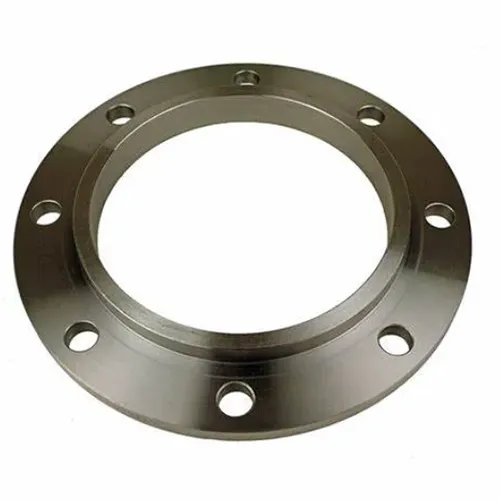-
Cangzhou Yulong Steel Co., Ltd.
-
Phone:
+86 13303177267 -
Email:
admin@ylsteelfittings.com
- English
- Arabic
- Italian
- Spanish
- Portuguese
- German
- kazakh
- Persian
- Greek
- French
- Russian
- Polish
- Thai
- Indonesian
- Vietnamese
- Zulu
- Korean
- Uzbek
- Hindi
- Serbian
- Malay
- Ukrainian
- Gujarati
- Haitian Creole
- hausa
- hawaiian
- Hebrew
- Miao
- Hungarian
- Icelandic
- igbo
- irish
- Japanese
- Javanese
- Kannada
- Khmer
- Rwandese
- Afrikaans
- Albanian
- Amharic
- Armenian
- Azerbaijani
- Basque
- Belarusian
- Bengali
- Bosnian
- Bulgarian
- Catalan
- Cebuano
- China
- China (Taiwan)
- Corsican
- Croatian
- Czech
- Danish
- Esperanto
- Estonian
- Finnish
- Frisian
- Galician
- Georgian
- Kurdish
- Kyrgyz
- Lao
- Latin
- Latvian
- Lithuanian
- Luxembourgish
- Macedonian
- Malgashi
- Malayalam
- Maltese
- Maori
- Marathi
- Mongolian
- Myanmar
- Nepali
- Norwegian
- Norwegian
- Occitan
- Pashto
- Dutch
- Punjabi
- Romanian
- Samoan
- Scottish Gaelic
- Sesotho
- Shona
- Sindhi
- Sinhala
- Slovak
- Slovenian
- Somali
- Sundanese
- Swahili
- Swedish
- Tagalog
- Tajik
- Tamil
- Tatar
- Telugu
- Turkish
- Turkmen
- Urdu
- Uighur
- Welsh
- Bantu
- Yiddish
- Yoruba

Oct . 18, 2024 11:26 Back to list
Techniques for Bending Thin-Walled Stainless Steel Tubing in Various Applications
Bending Thin Wall Stainless Tubing Techniques and Considerations
When it comes to the fabrication of metal components, bending thin wall stainless tubing is a common process that requires precision, expertise, and an understanding of the material's characteristics. Stainless steel is favored in various industries due to its strength, corrosion resistance, and aesthetic appeal. However, bending this material, especially in thin-walled forms, presents unique challenges. This article delves into the techniques and considerations essential for effectively bending thin wall stainless tubing.
Understanding Thin Wall Stainless Tubing
Thin wall stainless tubing is defined by its wall thickness relative to its diameter. Typically, a wall thickness of less than 1/16 inch is considered thin. The two major types of stainless steel commonly used in tubing are the austenitic and ferritic grades, with austenitic being more prevalent. Austenitic stainless steels, like 304 and 316, are known for their excellent corrosion resistance and good mechanical properties, making them ideal for both structural and aesthetic applications.
Techniques for Bending
1. Rotary Draw Bending This technique is favored for producing precise bends in thin wall stainless tubing. The tube is fed into a die, and as it is drawn around the die, it forms a bend. This method allows for consistent bend radii and minimizes deformation—crucial when working with thin walls. However, proper tooling and setup are vital to avoid wrinkling or collapsing the tube during the bending process.
2. Mandrel Bending In this method, a mandrel—essentially a support rod—is inserted into the tubing to prevent internal collapse during the bending process. This technique is particularly useful for bends with small radii and helps maintain the integrity of the tube while achieving a smooth, clean curve. Mandrel bending is often the preferred choice when cosmetic quality is essential, such as in architectural applications.
3. Compression Bending While less common for thin wall tubing, compression bending involves compressing the metal at the bend point, without a mandrel. This technique can be advantageous for simple bends but may lead to kinks and deformation, making it less suitable for applications where tube integrity is critical.
bending thin wall stainless tubing

4. Roll Bending This method uses a series of rolls to progressively form the tube into a curve. While more suited for larger diameters, roll bending can be adapted for thin wall stainless tubing, allowing for gentle curves over longer sections. However, the potential for material thinning and distortion must be carefully managed.
Considerations for Bending
Material Properties The properties of stainless steel vary with its composition and treatment. Understanding the specific grade being used is crucial, as different grades may exhibit different levels of flexibility, strength, and response to bending. For example, alloys like 304L are more ductile than others, which can influence the bending radius and technique chosen.
Bend Radius The radius of the bend is a critical factor. Thin wall stainless tubing can be more prone to deformation compared to its thicker counterparts. Generally, the minimum bend radius should be at least three times the tube's diameter for thin wall tubing to minimize the risk of cracking or pinching.
Spring Back Stainless steel has a tendency to spring back after bending, which must be factored into the design. The degree of spring back depends on the material's properties and the radius of the bend. Operators often compensate by over-bending the tube slightly to achieve the desired angle.
Finishing Processes After bending, finishing processes such as polishing or cleaning may be required to enhance the corrosion resistance and aesthetic quality of the tubing. Special care should be taken to prevent damage to the surface, as thin wall tubing can be more susceptible to scratches and blemishes.
Conclusion
Bending thin wall stainless tubing is a sophisticated process that demands a comprehensive understanding of material properties, bending techniques, and post-bending considerations. By leveraging the right methods and taking into account the unique attributes of stainless steel, manufacturers can achieve high-quality bends that meet the specific needs of various applications, from industrial projects to high-end architecture. As technologies advance and tooling continues to improve, the opportunities for bending thin wall stainless tubing will only grow, opening new avenues for innovations across multiple sectors.
Latest news
-
ANSI 150P SS304 SO FLANGE
NewsFeb.14,2025
-
ASTM A333GR6 STEEL PIPE
NewsJan.20,2025
-
ANSI B16.5 WELDING NECK FLANGE
NewsJan.15,2026
-
ANSI B16.5 SLIP-ON FLANGE
NewsApr.19,2024
-
SABS 1123 FLANGE
NewsJan.15,2025
-
DIN86044 PLATE FLANGE
NewsApr.19,2024
-
DIN2527 BLIND FLANGE
NewsApr.12,2024
-
JIS B2311 Butt-Welding Fittings LR/SR 45°/90° /180°Seamless/Weld
NewsApr.23,2024











